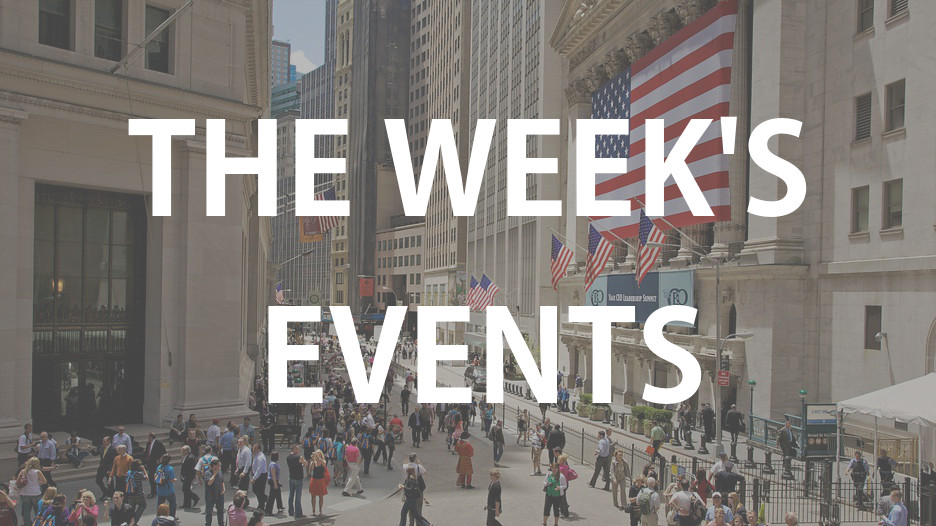Positives
1) US retail sales in May within the so called ‘control group’ which takes out auto’s, gasoline and building materials rose .5% m/o/m, one tenth more than expected and April was revised up by two tenths and March down by one tenth.
2) Initial jobless claims totaled 218k, 5k less than expected and down from 222k last week. The 4 week average was 224k vs 226k last week while continuing claims fell by 46k to a fresh 45 year low.
3) The NFIB small business optimism index for May improved by 3 pts m/o/m to 107.8. Exceeding the February level by a hair puts it at the best level since 1983. Current Compensation Plans rose 2 pts to 35%, the highest since this question was first asked back in 1984. Higher Selling Prices jumped by 5 pts to 19%, the most in 10 years while Earnings Expectations rose 4 pts to the best level on record dating back to 1973. The CEO of the NFIB was ebullient. “Main Street optimism is on a stratospheric trajectory thanks to recent tax cuts and regulatory changes. For years, owners have continuously signaled that when taxes and regulations ease, earnings and employee compensation increase.” Finding qualified workers remains the Single Most Important Business Problem and hence, the rising wage situation.
4) The preliminary June UoM consumer confidence index rose 1.3 pts m/o/m to 99.3, a bit above the estimate of 98.5. The peak in this cycle was seen in March at 101.4. The components were mixed as Current Conditions rose by 6 pts led by better household finances but Expectations were down by 1.7 pts “due to less favorable prospects for the overall economy” according to the UoM. Of note, one year inflation expectations rose one tenth to 2.9% and that is the highest since March 2015. The Higher Income component jumped 6 pts to the highest on record (dating back to 1978). The employment component also improved m/o/m. Higher income expectations and the confidence that comes with it helped to lift buying intentions of ‘major household items’ and vehicles. It did not help the housing component due to higher interest rates and record high prices. The ‘good time to buy a house’ component fell 3 pts to match the lowest level in 7 years. Those that said it’s a good time to sell a house rose to within 1 pt of the highest since at least 1992 when this question was first asked.
5) The June NY manufacturing survey was a better than expected 25, up from 20.1 in May and above the forecast of 18.8. It’s also the best print since October. New orders and backlogs both rose while inventories fell. Employment was a particular bright spot, rising to 19 from 8.7 and that is the best since December. While prices paid fell a touch, prices received rose to a 7 year high. The overall 6 month outlook did improve to 38.9 from 31.1 but that just puts it back in line with the 6 month average. The outlook for prices paid and received did fall back. Capital spending plans are still showing a frustratingly inability to accelerate as they fell by 2.4 pts and tech spending plans dropped by 6 pt.
6) Momentous meeting between Kim and Trump.
7) The Fed continued on with the path of normalizing interest rates. I define normal as rates above the rate of inflation. Policy will tighten again in two weeks when QT increases to $120b in Q3 from $90b in Q2.
8) Eurozone labor costs in Q1 rose 2% y/o/y, up from 1.4% in Q4 and that matches the quickest pace of gain since Q3 2012.
9) UK retail sales ex auto fuel were better than expected in May. They rose by 1.3% m/o/m, above the consensus gain of .3%. Warmer weather and the Royal Wedding (yes, was an economic boost) were the main reasons cited by the ONS.
10) The jobs data out of the UK was better than expected with a gain of 146k for the 3 months ended April, above the forecast of 120k. The unemployment rate held at 4.2% as expected, the lowest since 1975. Wage growth ex bonus’ rose by 2.8% y/o/y, down a tenth but still just off the best in 3 years. After a jump in April, May jobless claims did fall.
11) The Italian markets heard exactly what they wanted to hear from the Italian Finance Minster Giovanni Tria who spoke early this week. “The position of the government is clear and unanimous. There is no question of leaving the euro…It’s not just that we do not want to leave, we will act in such a way that the conditions do not get anywhere near to a position where they might challenge our presence in the euro.”
12) Positive for slowing excessive credit growth but certainly not positive for current economic activity, total loan growth in China in May fell by more than half m/o/m and at 761b yuan was well below expectations. Almost all of the decline was due to a continued shrinkage in lending from the shadow side of the banking system. Bank loan growth of 1.15T was only slightly below the forecast of 1.2T. Also of note, money supply growth (M2) was up by 8.3% y/o/y, just off the lowest level since data was first collected in 1996.
13) Japan’s uneven economic path continues but in a good way in April as its machinery orders figure surprised to the upside with a 10.1% m/o/m jump, well better than the estimate of up 2.4%.
14) Dead and Company are back in town and I get to take my son tonight to his 4th show.
Negatives
1) After a round of tariffs on washing machines, solar panels, steel and aluminum, we have announced a new round of taxes on Chinese products. It was about 30 minutes later that China responded with tariffs of their own which we in turn now threaten to add even more in response to that retaliation. The Shanghai composite closed the week at the lowest level since September 2016.
2) The May CPI rose .2% m/o/m both headline and core as expected. This brings the y/o/y gain to 2.8%, matching a 6 year high and the core rate to 2.2%. That core rate is one tenth from matching a 10 yr high. Services inflation ex energy, the persistent push on higher prices, was up .3% m/o/m and 3% y/o/y driven by rents again. Goods prices ex food and energy fell again but I question for how much longer.
3) Producer price inflation ran hotter than expected in May. The headline gain was .5% m/o/m and 3.1% y/o/y vs the forecast of up .3% and 2.8% respectively. That headline y/o/y print is the highest since December 2011. The core rate was up by .3% m/o/m and 2.4% y/o/y, both one tenth more than expected. Of note was the 4th .3% m/o/m increase in goods prices ex food and energy in the past 5 months. ‘Truck transportation of freight’ prices rose .8% m/o/m and 6.5% y/o/y.
4) US import prices in May rose 4.3% y/o/y, above the estimate of up 3.9% and that is just below the highest in 6 years. A lot of the gain was certainly energy but ex petro prices were still up 1.8% y/o/y which is also near the highest since 2012.
5) With the rebound in mortgage rates to near a 7 yr high, applications to buy a home fell 1.5% w/o/w and is now unchanged y/o/y. They are lower for the 6th week in the past 7 as higher rates along with record high home prices (or near) has clearly slowed the pace of transactions. Refi’s were down also by 1.5% w/o/w and lower by 34% y/o/y.
6) US industrial production fell .1% m/o/m, below the forecast of up .2% and it was driven by a 7 tenths decline in manufacturing. The forecast here was for no change. Blame it on a plunge in auto production of 6.5% m/o/m and 2.3% y/o/y. Machinery production fell by .9% m/o/m but is still up 2.3% y/o/y and there was no change for computers/electronics m/o/m but are up 5% y/o/y. Mining production was good, rising 1.8% due to oil and other higher commodities.
7) While Draghi finally laid out his plan for ending QE, keeping rates below zero for another year will further damage bank profitability. The Euro STOXX bank index closed the week just off a 19 month low.
8) Kuroda and the BoJ will continue on their path of nationalizing the Japan’s bonds and stocks in the arbitrary search for 2% inflation. The Japanese TOPIX bank index closed the week just off the lowest level in 9 months.
9) Japan reported a spike in producer prices in May as they grew by 2.7% y/o/y, well more than the estimate of up 2.1%. That matches the quickest pace since December
10) The currencies of Argentina and Turkey plunge again and take others with it.
11) China reported economic data from May that was weaker than expected across the board. Retail sales grew by 8.5% y/o/y which is a solid number compared to most places but the slowest rate of growth since 2003 and below the forecast of 9.6%. Industrial production and fixed asset investment also missed forecasts with the latter slowing to the weakest pace since at least 1999 when the data set began.
12) The UK reported CPI for May as expected with the headline print up 2.4% y/o/y and up 2.1% at the core level. These are unchanged with April but remain well above where the BoE has their benchmark rate. Producer prices though surprised to the upside with a 9.2% y/o/y jump vs the estimate of up 7.6%.
13) The eurozone industrial production figure for April fell by .9% m/o/m, two tenths more than expected but March was revised up by a tenth. The y/o/y increase of 1.7% is the least since April 2017.
14) The ZEW investor measure of the Germany economy fell to -16.1 from -8.2. That is the worst print in 6 years. The Current Conditions component fell almost 7 pts m/o/m to the lowest since April. The ZEW said, “The recent escalation in the trade dispute with the United States as well as fears over the new Italian government pursuing a policy which potentially destabilizes the financial markets have left their mark on the economic outlook for Germany. On top of this, German industry has been reporting worse than expected figures for exports, production and incoming orders for April. As a result, the economic outlook for the next six months has worsened considerably.”








 Peter is the Chief Investment Officer at Bleakley Advisory Group and is a CNBC contributor. Each day The Boock Report provides summaries and commentary on the macro data and news that matter, with analysis of what it all means and how it fits together.
Peter is the Chief Investment Officer at Bleakley Advisory Group and is a CNBC contributor. Each day The Boock Report provides summaries and commentary on the macro data and news that matter, with analysis of what it all means and how it fits together.